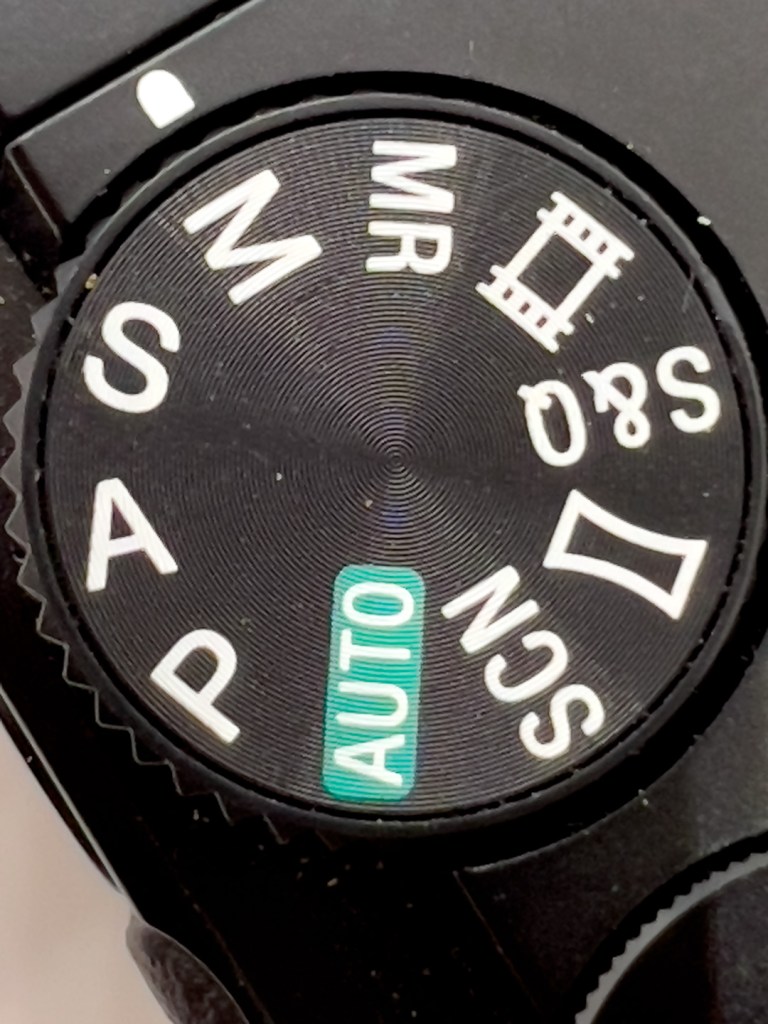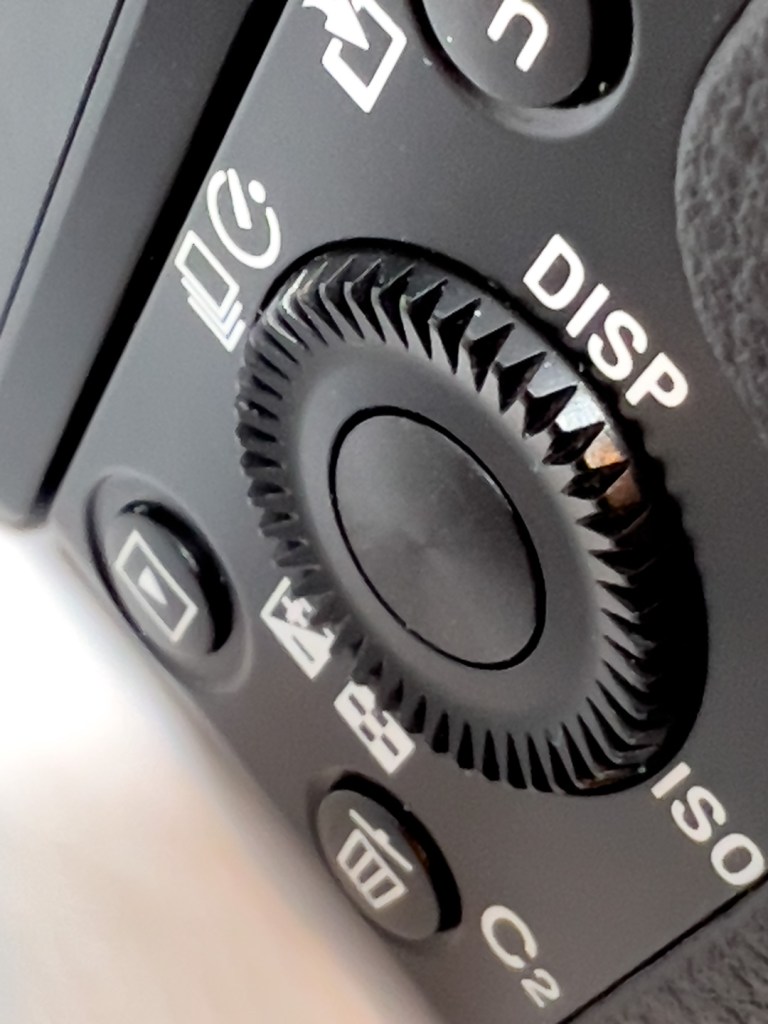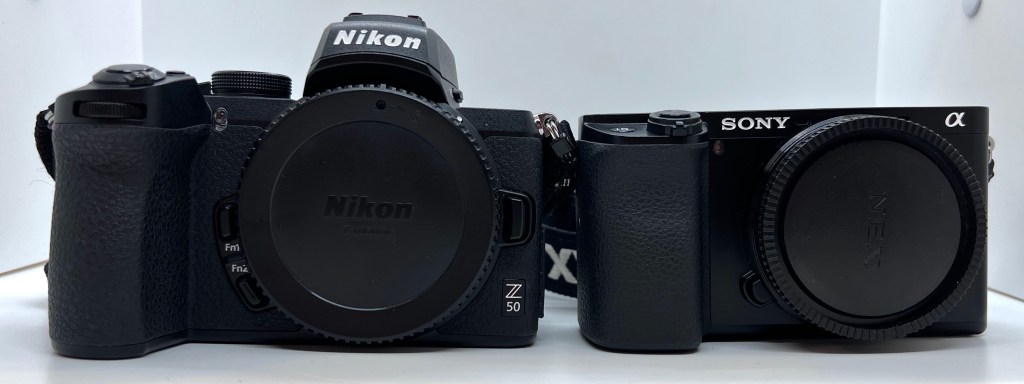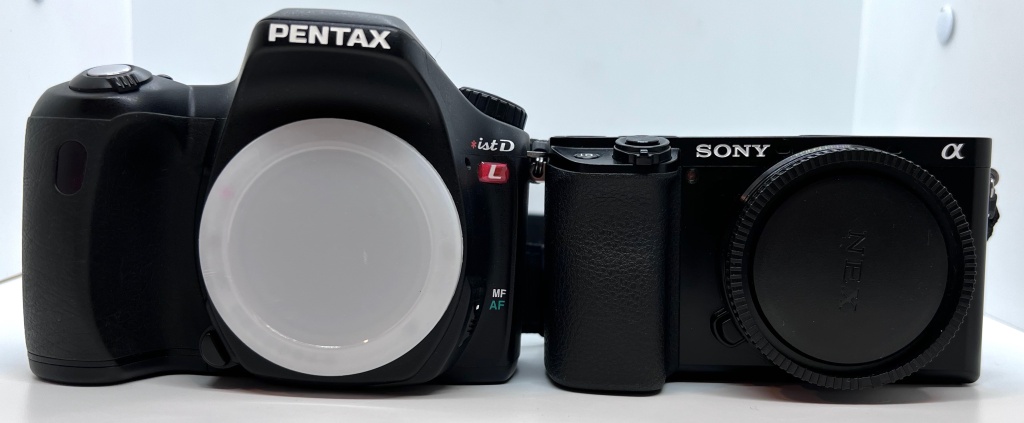I’ve had my Sony a6100 for about four weeks now and I’d like to share my first impressions. Four weeks is a bit long for a first impressions article, but the weather wasn’t great for a bit and I needed some time to get to know it. Anyway, here it is.
Unexpected Surprises
- It shipped with two extra generic batteries and a generic charger. These weren’t listed with the camera but are great because the battery life is… not long. Actually I don’t think it’s really any different than my Z50, but that isn’t anything to rave about.
- I guess MPB just separates the lenses from the cameras they receive and ships smaller accessories that are traded in. I even got the original box!
Design & Ergonomics





- From the front it looks like the viewfinder has been sliced off, but it’s just been moved. It’s in an odd position to the left side of the camera, more like a point-and-shoot or a rangefinder. Some people can’t handle it, but I got used to holding it up to my left eye and across my face pretty quickly. Portrait shooting is a bit more awkward because I have to curl my hand around a lot, but it still gets the job done.
- It’s a bit lighter than the Z50 and nearly an inch shorter. The grip isn’t as deep and I was worried that it would be difficult to hold. So far that isn’t an issue with the two kit lenses I own. They are small and light, keeping everything balanced. I’m sure a 70-200 mm f/2.8 full frame lens would be difficult to use with the a6100 but I don’t own any for Sony so that’s not an issue. The Z50 definitely feels sturdier and is more comfortable to hold, but the a6100 is fine.
- The lens release button is on the right side next to the grip, which is pretty obnoxious. There isn’t much space in that area and I have to jam my finger in to change lenses, even on lenses that aren’t any wider than the lens mount. Canon and Nikon put this button on the left where there is room and the added benefit of not accidentally releasing the lens when gripping the camera.
- The memory card goes in the bottom just like the Z50. Must be a consumer camera thing!
Usability & Customization



- It doesn’t have quite as many buttons than that Z50, but compensates by assigning functions to each of the 4 directions on the back control wheel. The only disadvantage to this is that you cannot move the focus points in certain modes without assigning a button to the “Focus Standard” function. It makes moving the focus point awkward because you have to hit a button then move the focus point instead of being able to move it at any time like my other cameras. This two-step method is a lot like the original implementation of subject tracking on my Z50 that was so annoying.
- Speaking of that wheel, I love it! It’s just like Canon’s control wheel – my absolute favorite part of my Canon bodies. Control wheels are hands down the fastest way to speed through photos in playback. The Sony’s is tiny by comparison but I’ll take it any day!
- It doesn’t have a front control dial like the Z50 but does have two function buttons. Most of the buttons are customizable as well. Higher-end Sonys have a front dial, rear dial, and control wheel – the best of both worlds!
- With the overloaded control wheel, the a6100 and Z50 are about equivalent in button availability.
- The EVF is lower resolution than my Z50. It’s about 800 x 600 pixels (ish) versus the Z50’s 1024 x 768 (ish). All of those pixels are squished down into a tiny screen so it isn’t as bad as it sounds, but it does result in a grainier image. In bright light there is more shimmer, but overall it isn’t that bad. The EVF was one of the big reasons I avoided mirrorless for so long; if I can handle this one, any other will be just fine.
- The touchscreen allows you to move the focus point with your finger, even when your eye is to the EVF. Canon allows this as well, but Nikon doesn’t on any of it’s cameras. It’s super useful and a common request to Nikon.
- The menus are as confusing and random as people say they are. I went through all of the menu sections four different times looking for control customizations. I had to look it up online and discovered that I had missed it on the “purple” photo tab. The first three pages of this tab are for movie settings so I skipped over it thinking it was… for movies. If I had only persisted I would have learned that custom control settings are on page 8 and not in the setup tab or a custom function tab. Of course. To be fair, the other thing I heard is true as well: once you figure out where stuff is, it isn’t a big deal since you don’t spend much time in menus after that.
Lenses
- The 16 – 50mm kit lens is terrible. It’s soft everywhere and the out of focus areas look like hazy smears. I knew it was bad, but I didn’t realize it was this bad. I haven’t had a lens this bad since my Pentax lenses. Yikes.
- It’s also obnoxious because it’s a power zoom, meaning I have to press a button to zoom in…. and zoom out. Nice for video, I guess, but makes quick zooming to catch a photo impossible and makes general zooming slow and frustrating.
- It gets much sharper stopped down, but it’s already a slow lens so I end up at f/8 with no background blur and a high ISO. Ew.
- The 55 – 210mm lens is sharper, but not nearly as sharp as the 70 – 300mm DX I got with my Z50. I had to send the first one back to MPB because its stabilizer made a grinding noise. The second one is quiet like it should be, but it doesn’t improve the image quality at all 🙂
Shooting Experience
Outside of autofocus, this is the largest difference between Sony and Nikon. While the Z50 had a different focus system and an EVF, it was otherwise very similar to the other Nikons I have. I was right at home quickly. The Sony is a different animal so I’ll make some comparisons here.




- The mechanical shutter is pretty loud – louder than the Z50 and very similar to my D500. The silent shutter is completely silent, unlike the Z50.
- Auto ISO is limited in comparison with the Z50. I can set a minimum and maximum value but cannot set it to use the 1/focal length rule or adjust that rule like I can on my Nikons. Higher-end Sony’s can do this, but it was left out of this lowest-end model. I compensate by shooting in manual mode so I can set the shutter speed and aperture while the camera figures out the ISO.
- Sony has more display modes for the screen and viewfinder than Nikon, including one that turns the screen off, but still allows it to be used for review and menus. This means I use the EVF to take photos and the back screen stays off until I press a button – exactly what I’m looking for on my Z50!
- This is small but helpful – the battery indicator shows a percentage in addition to the three-section readout. None of my Nikons do this. My D750 and D500 have a menu where I can see a percentage but the Z50 does not. This leaves me with just a general indication as to whether the battery is full, kind of full, or nearly empty, and no idea when it will transition from one to the other.
- After a bit of shooting I long for my Z50. The z6100 is just so small and the buttons are so crammed together. I mapped the AEL button to AF-On and I constantly hit the nearby Fn button when trying to focus an image instead. I get tired of accidentally hitting the wrong buttons because they are too close together and I feel so relieved to pick up a (slightly) larger camera with more space.
- Image zooming during playback drives me crazy! When I press the magnify button, the a6100 can either zoom to the last level I zoomed or zoom to the focused area of the image. Sometimes I want to zoom to the focused area of the image, but sometimes I don’t want it to be 100%. I rarely ever want to zoom as far as the last image I zoomed in on. Neither of these really work for me. On my Nikons zoom always starts at the same place regardless of anything else. Luckily I can double-tap to zoom on the a6100 as well and that at least helps place me in the right part of the image.
- Overall the a6100 is slower than the Z50. It buffers for much longer and image zooming is visibly delayed. This is Sony’s lowest-end model in the Alpha line, so it isn’t unexpected. It also isn’t so bad that the camera isn’t usable – just a bit annoying at times.
Conclusion
The a6100 is a low-end consumer interchangeable lens camera and it’s feature set follows suit. I don’t penalize it for what it is; in fact it is a lot more capable and comfortable than I expected it to be. I can absolutely use it to take photos and overall I’m pretty impressed with what it can do. I’ll post about my autofocus and image quality experiences later on, but preview – the autofocus eye detection and tracking is much better than the Z50 🙂 I’ll definitely be keeping this one around for a while to get some longer-term experience with Sony. Maybe I’ll even pick up a few high-quality lenses for it to give it a fair shot.

A well written first impression, I think 4 weeks is a reasonable time to get a good feel for a camera. I used to shoot with an RX100 III for a few years, really liked the camera, small form factor and image quality but it was a bit fiddly. I was contemplating an upgrade to Sony FullFrame when I met an Olympus photographer who gave me a go with his gear. I’ve never looked back.
LikeLike
This is a good short term review. I think 4 weeks is a good amount of time to get used to a new camera and give a fairer review than many of the “proper” review sites. I used to shoot with n RX100 III so can relate to much of what you have said. Cheers.
LikeLike